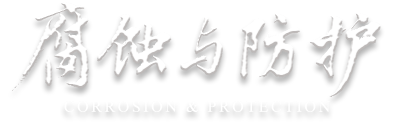取向硅钢内氧化层形貌对底层物相及形貌的影响
Effects of Internal Oxide Layer Morphology on Phase and Morphology of Bottom Layer of Oriented Silicon Steel
-
摘要: 取向硅钢表面底层是在高温退火过程中由内氧化层与辊涂于表面的MgO涂层反应生成的具有一定绝缘性的薄膜。分别对有无MgO涂层的取向硅钢进行高温退火试验,采用扫描电镜(SEM)和场发射电子探针显微分析仪(EPMA),分析了露点温度对其表面内氧化层及硅酸镁底层形貌的影响,探明了硅酸镁底层物相及形貌与内氧化层形貌之间的关系,确定影响硅酸镁底层附着性的主要因素。结果表明:当退火温度为1 170 ℃,露点温度由-10 ℃增加至25 ℃时,涂层试样表面均形成了底层,底层下方球形氧化物颗粒直径由0.23 μm增加至1.49 μm;当露点温度达到25 ℃时,底层下方会出现连续的氧化物。底层下方的氧化物颗粒可减少低热膨胀系数的物相在底层与基体连接界面的分布,降低底层与基体连接界面的热应力,从而提高底层在取向硅钢表面的附着性。Abstract: The forsterite film on oriented silicon steel surface is a thin film with insulating property, which is formed by the reaction of the internal oxidized layer and the MgO coating on the steel surface in the process of high temperature annealing. The high temperature annealing tests of oriented silicon steel with and without MgO coating were carried out. The effects of dew point temperature on the morphology of inner oxide layer and magnesium silicate underlayer on the surface of silicon steel were analyzed by scanning electron microscope (SEM) and electron probe microanalyzer (EPMA). The relationship between the phase and morphology of magnesium silicate bottom layer and the morphology of internal oxide layer was found out, and the main factors affecting the adhesion of magnesium silicate bottom layer were determined. The results show that when the annealing temperature was 1 170 ℃, the dew point temperature was reduced from -10 ℃ to 25 ℃, the bottom layer formed on the coated sample surface, and the diameter of spherical oxide particles below the bottom layer increased from 0.23 μm to 1.49 μm. When the dew point temperature increased to 25 ℃, continuous oxides appearred below the film. The oxide particles under the film could reduce the distribution of the phase with low thermal expansion coefficient on the interface between the film and the matrix, thus reducing the thermal stress on the interface, and finally increasing the adhesion of the film on the steel surface.

 下载:
下载: